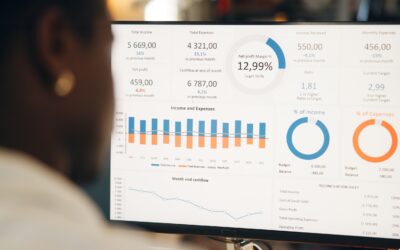Everyone Tracks Something—But Most Track the Wrong Things
Nonprofits love numbers. Page views, followers, impressions, likes. It all looks impressive in a board report. But here’s the uncomfortable truth: a lot of what we track has zero correlation with giving. Vanity metrics make you feel productive while hiding the fact that you’re not growing.
Real success online isn’t about volume—it’s about velocity. It’s about how fast a person moves from “I’m aware” to “I’m giving.” KPIs are your map, but only if you’re tracking the right terrain.
The Vanity Trap: When Data Lies to You
Let’s start with the stuff that looks good on a slide deck but does nothing for your bottom line.
- Social media followers: Thousands of followers mean nothing if none donate. You can’t pay rent with hearts and thumbs-up emojis.
- Email open rate alone: Opens show curiosity, not commitment. Clicks, conversions, and gifts tell the real story.
- Website traffic: Ten thousand visitors mean nothing if your donate button is buried under three scrolls.
- Video views: People watch cat videos, too. Engagement only matters if it leads to action.
Chasing surface-level metrics is like counting how many people walk past your building instead of who walks in the door.
The KPIs That Actually Drive Online Giving
You don’t need to measure everything. You need to measure what matters. Here are the real performance indicators that reveal health, momentum, and growth.
1. Donor Conversion Rate
This is your north star. Out of everyone who lands on your donation page, how many actually give? If your conversion rate is below 15%, it’s time to rework your copy, simplify your forms, and remove distractions.
Start by examining what psychological cues you’re giving donors. Are they confident in your trustworthiness? Visual cues like seals, testimonials, and transparency statements can make or break that decision. You’ll find great examples of this in donation page trust cues, which breaks down the micro-signals that boost donor confidence.
2. Average Gift Size
This tells you how compelling your message truly is. If people give $10, your story might inspire empathy. If they give $100, it’s inspiring belief. And yes, both matter—but one moves your mission faster. Test different suggested donation tiers and see which anchors pull the strongest response.
The twist? Bigger isn’t always better. You want balanced growth—more mid-tier donors, not just one-time whales.
3. Recurring Gift Percentage
This one’s the quiet powerhouse. It’s the subscription model of generosity. The percentage of donors giving monthly is your real sustainability metric. If you’re under 20%, you’re leaving money on the table. You can find a breakdown of how to fix that in setting up recurring giving campaigns that work.
Recurring donors don’t just give more—they stick around longer. They also cost less to retain. Translation: predictable revenue, lower stress, fewer panic appeals.
4. Donor Retention Rate
It costs five times more to find a new donor than to keep an old one. You’ve heard that stat before, but let it sink in. Retention is the ultimate KPI because it’s a mirror: it shows whether people actually believe in your impact.
If you’re not tracking year-over-year retention, you’re driving blind. Look for patterns—are people dropping after their first gift? That means your thank-you sequence isn’t landing. Are monthly givers disappearing after three months? Your impact updates are stale.
5. Conversion Speed
How long does it take for a new subscriber or follower to become a donor? That’s your conversion velocity. The shorter the gap, the stronger your messaging. The longer the gap, the colder your funnel.
A practical trick: timestamp every donor’s first website visit, email subscription, and donation date. The faster those milestones stack up, the better your engagement engine is performing.
6. Donation Page Abandonment Rate
This one hurts to look at but tells the truth. Every time someone clicks “Donate” and doesn’t finish, something went wrong. Maybe your form took too long to load. Maybe you asked for too much info. Or maybe they got distracted by another tab.
Reduce friction. Limit required fields to essentials. Offer mobile-optimized payment flows—something we explored in mobile-first fundraising beyond responsive design. Because if your donation page feels like a chore, you’re losing goodwill in real time.
KPIs That Predict the Future
Once you’ve nailed the basics, look forward. Predictive KPIs tell you not just how you’re doing—but where you’re headed.
- Donor lifetime value (LTV): How much a donor gives over their full relationship with you. A high LTV signals emotional loyalty and smart stewardship.
- Upgrade rate: How many donors move from one-time to recurring, or from $25 to $50 tiers. It’s proof of relationship depth.
- Reactivation rate: The percentage of lapsed donors who return. This shows how well your re-engagement campaigns perform.
Think of these as your nonprofit’s “vitals.” You don’t wait until the patient’s flatlining—you monitor trends to catch trouble early.
The Problem with Pretty Dashboards
Everyone wants fancy data visualizations. Pie charts, graphs, filters. They look smart in presentations. But analytics tools often become data museums—beautiful, impressive, and completely unused.
If a KPI doesn’t change how you act this week, it’s a vanity metric wearing glasses.
The purpose of metrics isn’t measurement—it’s movement. Data should provoke decisions, not applause. That’s the whole point.
How to Build a KPI Dashboard That Works
Here’s what a high-functioning dashboard actually looks like:
- Simple: No more than 10 active metrics. The human brain can’t prioritize 40 things.
- Segmented: Show different views for acquisition, retention, and engagement. One size fits no one.
- Current: Real-time or weekly updates. Annual reports are autopsies—too late to save anything.
- Actionable: If a metric rises or falls, you should know what button to push next.
Good dashboards create behavior. Bad ones create meetings.
Turning Metrics into Movement
Numbers don’t inspire donors. Stories do. But numbers *guide* your storytelling. A spike in recurring gifts tells you to lean into community-driven messaging. A drop in retention tells you to double down on follow-up.
Pair your data with your humanity. That’s where insight happens. Use metrics to see patterns, not people as percentages.
The Danger of Data Without Context
It’s tempting to treat KPIs like a scoreboard. But the real world is messy. A 10% dip in conversion rate could mean your traffic source changed. A surge in small gifts might mean you went viral—but with the wrong audience.
Always ask “why” before “what now.” Metrics tell you the “what.” Only context gives you meaning.
The Final Metric That Trumps Them All
At the end of the day, your most valuable KPI isn’t numerical. It’s relational. Are your donors *talking* about you when you’re not in the room? Are they bringing friends to your mission? That’s advocacy—and it’s the metric that money can’t buy.
When your organization starts inspiring people to share stories, not just dollars, every other KPI improves naturally. Because real growth isn’t found in spreadsheets—it’s found in the hearts of people who care enough to act.




0 Comments